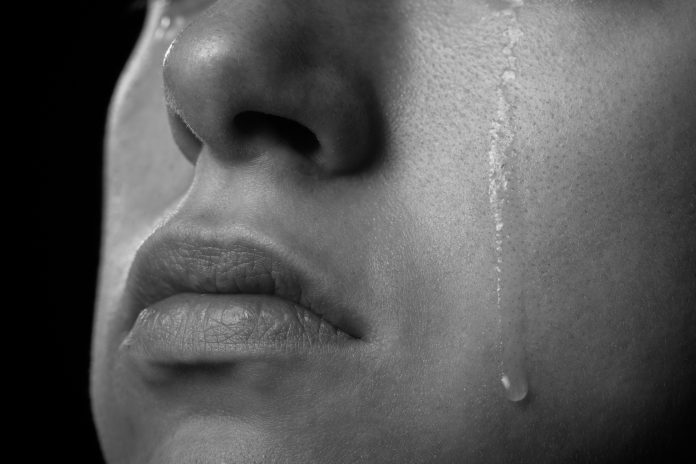Suicide is the cause of death for 800,000 people globally, with one person every 40 seconds: What have researchers identified about suicide risk in the brain?
The combined number of adolescents who die from cancer, heart vdisease, AIDS, birth defects, stroke, pneumonia, influenza and chronic lung disease is less than the number who die from suicide.
One in three adolescents think about killing themselves, with the same amount attempting it. Despite this being such a huge problem for adolescents, previous research mostly focuses on adults.
Dr Anne-Laura van Harmelen, co-first author from the University of Cambridge said:
“Imagine having a disease that we knew killed almost a million people a year, a quarter of them before the age of thirty, and yet we knew nothing about why some individuals are more vulnerable to this disease.
“This is where we are with suicide. We know very little about what’s happening in the brain, why there are sex differences, and what makes young people especially vulnerable to suicide.”
What did the researchers do?
Hilary Blumberg, MD, John and Hope Furth Professor of Psychiatric Neuroscience at Yale, reviewed 20 years of scientific literature on suicidal thoughts and behaviour, which included brain imaging studies. They looked at 131 studies, which included over 12,000 individuals, looking for differences in brain structure that could increase suicide risk.
Whilst brain structure was the key focus, the researchers quickly realised that vulnerable groups were under-represented in all the samples. Transgender individuals are at a currently increased risk of suicide, but only one individual in the 131 study sample was identified as transgender. This raises questions about the future of suicide research, such as, what groups need to be examined in future studies?
The researchers then looked for evidence of structural, functional, and molecular alterations in the brain that could increase risk of suicide. These scientists successfully identified two brain networks and connections between them, which are thought to be essential in the development of suicidal ideation.
Professor Hilary Blumberg said:
“The review provides evidence to support a very hopeful future in which we will find new and improved ways to reduce risk of suicide.
“The brain circuitry differences found to converge across the many studies provide important targets for the generation of more effective suicide prevention strategies. “It is especially hopeful that scientists, such as my co-authors on this paper, are coming together in larger collaborative efforts that hold terrific promise.”
What are the two suicide-related networks?
Network one: Emotion
This network involves areas at the front of the brain, known as the medial and lateral ventral prefrontal cortex and their connections to other regions. Changes to this network can lead to excessive negative thoughts and difficulties controlling emotions, which can incite thoughts of suicide due to a lack of appropriate emotional processing.
Network two: Decision-making
This network involves the dorsal prefrontal cortex and inferior frontal gyrus system, which have a role in decision making. Scientists expect that alterations in this network can influence suicide attempts, which can be a dysfunctional expression of problem-solving and controlling behaviour.
What have past reviews on suicide found out?
Cross-sectional reviews are how studies have mainly been done for suicide. This type of research is a ‘snapshot’ of the brain, which can only focus on moments of suicidal thoughts or behaviours from the past.
The researchers who discovered the two systems that influence suicidal behaviour have said that there is an urgent need for whether their ideas are seen in future suicide attempts. They also want future researchers and healthcare workers to look at how therapies are able to change the structure or function of these networks, maybe then reducing the risk faced by those who have altered networks that can influence suicidal ideation.
Co-first author Dr Lianne Schmaal from the University of Melbourne said:
“The biggest predictor of death by suicide is previous suicide attempt, so it’s essential that we can intervene as early as possible to reduce an individual’s risk.
“For many individuals, this will be during adolescence. If we can work out a way to identify those young people at greatest risk, then we will have a chance to step in and help them at this important stage in their lives.”
HOPES (Help Overcome and Prevent the Emergence of Suicide) is a study launched by this team, which is supported by the mental health research charity MQ. HOPES looks at data from around 4,000 young people across 15 countries, which can be expected to create a model that predicts which groups are at risk of suicide. The team are working with brain scans, information on environment, psychological states and traits in relation to global suicidal behaviour.
The research was supported by the mental health charity MQ Brighter Futures Award Program, National Institutes of Health, Department of Veterans Affairs, NHMRC, Royal Society Dorothy Hodgkin Fellowship, American Foundation for Suicide Prevention, Brain and Behavior Foundation, Robert E. Leet and Clara M. Guthrie Patterson Trust, and For the Love of Travis Foundation.
Van Harmelen said:
“There are very vulnerable groups who are clearly not being served by research for a number of reasons, including stigma and the need to prioritise treatment.
“We urgently need to study these groups and find ways to help and support them.”
Reference
Schmaal, L, van Harmelen, A.-L. et al. Imaging suicidal thoughts and behaviors: a comprehensive review of 2 decades of neuroimaging studies. Molecular Psychiatry; 2 Dec 2019; DOI: 10.1038/s41380-019-0587-x











